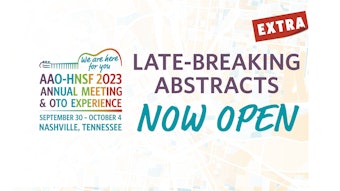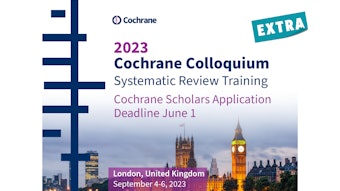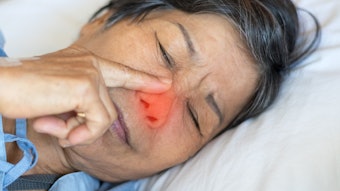A Quest for Quality of Life for Allergy Sufferers
Successful control of allergic symptoms through medication, allergen avoidance, or immunotherapy can improve the quality of life of allergy sufferers.
Christine B. Franzese, MD, Rhinology and Allergy Education Committee member

While novel routes of allergen delivery are being investigated, the most common types of allergy immunotherapy currently used in practice are subcutaneous immunotherapy (SCIT) and sublingual immunotherapy (SLIT). SCIT involves the subcutaneous injection of allergens in a repeated, predetermined, sequentially escalating fashion until a therapeutic dose is reached and maintained. SLIT involves repeated doses of allergen extract(s) placed under the tongue either in aqueous form or dissolvable tablet form but may or may not involve an escalation period prior to using a maintenance/therapeutic dose. According to the updated International Consensus Statement on Allergy and Rhinology: Allergic Rhinitis (2023), both types of allergy immunotherapy are supported by aggregate grade A evidence, with the strongest evidence for each type from studies that evaluated efficacy over a placebo using single antigen therapy.5 However, there are some nuances when discussing evidence to support each of these therapies.
Whereas overall SCIT and SLIT share the strength of aggregate grade A evidence, both share similar weaknesses as well. Both types of allergy immunotherapy suffer from a lack of good quality evidence supporting multi-antigen therapy, despite multi-antigen immunotherapy for both modalities being considered standard practice in the United States.6 There is also a lack of good quality head-to-head comparison studies and randomized controlled trials of SCIT and SLIT, and some studies evaluating available literature have demonstrated mixed results. Recent studies have found no clear superiority of one type of allergen immunotherapy over the other, with both modalities demonstrating reductions in medication usage and symptom improvement; however, there is some older, lower quality or indirect data that show SCIT to be superior to SCIT in efficacy.5,6
In 2013 one systematic review of eight trials comparing SCIT and SLIT found that there was low-grade evidence to support SCIT as a superior modality to SLIT for reduction in asthma symptoms and moderate-grade evidence for reduction of allergic rhinitis symptoms, but a more recent systematic review published in 2021 found no significant differences in outcomes, with both modalities being comparably effective.7,8 However, this study noted that there was insufficient evidence that prevented direct meta-analysis.8 To further muddy the waters, as mentioned earlier, sublingual immunotherapy has different forms including Food and Drug Administration–approved sublingual tablets as well as aqueous SLIT, which generally consists of using one or more subcutaneous allergen extracts off label. When comparing evidence between SCIT and SLIT, it can become difficult to separate data supporting the different types of SLIT from the data supporting the overall efficacy of SLIT.
In addition to the evidence, there are other factors to consider when discussing immunotherapy options with a patient. SCIT requires in-office administration that can be inconvenient, a period of observation after injection due to the risk of anaphylaxis or death, and a procedure that can be difficult for needle phobic children or adults.6 SLIT can be safely administered at home and has little to no escalation period, but it requires more frequent administration.5 During the initial stages and early part of the SARS-CoV-2 pandemic, many patients on SCIT experienced breaks in their therapy as offices grappled with the challenges of safely administering SCIT while reducing exposure for clinical staff and patients. Patients on SLIT during that same period would have been much less likely to experience a break in treatment due to those issues.
Insurance can prove to be problematic with both therapies as well. Aqueous SLIT is generally not covered by insurance, while SLIT tablets can be covered through the patient’s pharmacy benefits if the patient has that type of coverage. SCIT is generally covered, but there are some important nuances here as well. Insurance will generally not cover at-home administration of SCIT, except in rare circumstances, and payers are more commonly shifting a larger part of the initial “covered” charges for SCIT to the patient’s deductible. So, although it may seem more financially appealing to a patient if a payer will cover SCIT, patients should be informed in advance of initiating SCIT—especially patients on high deductible plans—that they may be billed for charges that insurance is “covering” as these are placed under patient deductibles. This discussion with patients will ensure there are no unpleasant surprises.
Overall, both SCIT and SLIT have been used for decades to treat allergies and both types of immunotherapy have been shown to be effective in reducing allergy symptoms. Each has a different mode of administration that can have important implications for patient compliance and the overall success of treatment, and each may have different financial implications for the patient. However, both can be successfully employed to help patients experience relief from allergy symptoms and improve their overall quality of life.
References
- Hahn-Pedersen J, Boxall N, Maier W, Linneberg A, Serup-Hansen N. Systematic literature review assessing data on the burden of allergic rhinitis from a cost and quality of life perspective. Value Health. 2014;17(7):A602.
- Li AR, Zhang K, Reddy PD, et al. Systematic review of measures of disease severity in rhinitis. Int Forum Allergy Rhinol. 2021;11(9):1367-1377.
- Goetzel RZ, Long SR, Ozminkowski RJ, Hawkins K, Wang S, Lynch W. Health, absence, disability, and presenteeism cost estimates of certain physical and mental health conditions affecting U.S. employers. J Occup Environ Med. 2004;46(4):398-412.
- Workman AD, Dattilo L, Rathi VK, Bhattacharyya N. Contemporary incremental healthcare costs for allergic rhinitis in the United States. Laryngoscope. 2021;132:1510-1514.
- Wise SK, Damask C, Roland, LT, et al. International consensus statement on allergy and rhinology: Allergic rhinitis – 2023. Int Forum Allergy Rhinol. 2023;13(4):293-859. doi: 10.1002/alr.23090
- Cox L, Nelson H, Lockey R, et al. Allergen immunotherapy: A practice parameter third update. J Allergy Clin Immunol. 2011;27(1):S1-155.
- Chelladurai Y, Suarez-Cuervo C, Erekosima N, et al. Effectiveness of subcutaneous versus sublingual immunotherapy for the treatment of allergic rhinoconjunctivitis and asthma: a systematic review. J Allergy Clin Immunol Pract. 2013;1(4):361-369.
- Tie K, Miller C, Zanation AM, Ebert CS Jr. Subcutaneous versus sublingual immunotherapy for adults with allergic rhinitis: a systematic review with meta-analyses. Laryngoscope




















